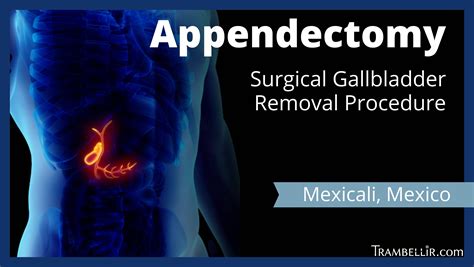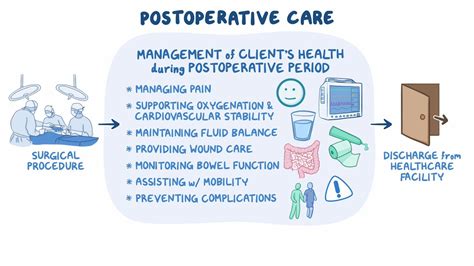Intro
Learn about appendectomy recovery, including post-op care, pain management, and complications, to ensure a smooth healing process after appendix surgery, with tips for rapid recovery and minimizing infection risk.
The appendix is a small, pouch-like structure attached to the large intestine, and its function is not fully understood. However, when it becomes inflamed or infected, it can cause severe abdominal pain, nausea, and vomiting. In such cases, surgical removal of the appendix, known as an appendectomy, is often necessary to prevent further complications. The recovery process after an appendectomy can vary depending on the individual and the type of surgery performed. Generally, it is essential to follow a comprehensive recovery guide to ensure a smooth and speedy healing process.
Recovery from an appendectomy typically involves a combination of rest, medication, and dietary changes. It is crucial to follow the instructions provided by the healthcare provider to minimize the risk of complications and promote optimal healing. The recovery process can be divided into several stages, each with its unique challenges and requirements. Understanding these stages and taking proactive steps can help individuals navigate the recovery process with confidence. Furthermore, being aware of the potential risks and complications associated with an appendectomy can help individuals seek medical attention promptly if they experience any unusual symptoms.
The importance of a well-structured recovery guide cannot be overstated. A comprehensive guide provides individuals with the necessary information to manage their recovery effectively, reducing the risk of complications and promoting a speedy return to normal activities. By following a recovery guide, individuals can ensure that they are taking the necessary steps to support their healing process, including managing pain, preventing infection, and maintaining a healthy diet. Additionally, a recovery guide can help individuals understand what to expect during the recovery process, reducing anxiety and stress. With the right guidance and support, individuals can navigate the recovery process with confidence, achieving a full and successful recovery from an appendectomy.
Understanding the Appendectomy Procedure

Preparation for Appendectomy
Preparation for an appendectomy typically involves a series of tests and evaluations to confirm the diagnosis and assess the individual's overall health. This may include blood tests, imaging tests, and physical examinations. Additionally, individuals may be required to fast for a specified period before the surgery and avoid taking certain medications. It is essential to follow the instructions provided by the healthcare provider to ensure a smooth and safe surgical experience. By understanding the preparation process, individuals can feel more in control and prepared for the surgery.Post-Operative Care and Recovery

Managing Pain and Discomfort
Managing pain and discomfort is a critical aspect of the recovery process. Individuals may experience pain, tenderness, and swelling at the incision site, which can be managed with medication. It is essential to follow the instructions provided by the healthcare provider regarding pain management, as overmedication or undermedication can have adverse effects. Additionally, individuals can use non-pharmacological methods to manage pain, such as deep breathing exercises, relaxation techniques, and applying heat or cold compresses to the affected area. By managing pain and discomfort effectively, individuals can reduce the risk of complications and promote a speedy recovery.Nutrition and Dietary Changes

Returning to Normal Activities
Returning to normal activities is a gradual process that requires patience and caution. Individuals should avoid heavy lifting, bending, or strenuous activities for several weeks after the surgery, as these can put strain on the incision site and delay healing. Additionally, individuals should avoid driving or operating heavy machinery until they are no longer taking pain medication and can react quickly and safely. By following a comprehensive recovery plan, individuals can minimize the risk of complications and promote a speedy return to normal activities.Complications and Risks

Follow-Up Appointments
Follow-up appointments are a critical aspect of the recovery process. Individuals should attend all scheduled follow-up appointments with their healthcare provider to monitor their progress and address any concerns or questions. Additionally, individuals should follow the instructions provided by their healthcare provider regarding wound care, medication, and dietary changes. By attending follow-up appointments and following a comprehensive recovery plan, individuals can minimize the risk of complications and promote optimal healing.Conclusion and Next Steps

We invite you to share your experiences and ask questions about appendectomy recovery in the comments section below. Your feedback and insights can help others navigate the recovery process with confidence. Additionally, please share this article with anyone who may be undergoing an appendectomy, as it can provide valuable information and support during the recovery process.
What are the symptoms of appendicitis?
+Appendicitis typically causes severe abdominal pain, nausea, vomiting, and fever. The pain often starts near the navel and then moves to the lower right abdomen.
How long does it take to recover from an appendectomy?
+The recovery time for an appendectomy can vary depending on the individual and the type of surgery performed. Generally, it can take several weeks to fully recover from an appendectomy.
What are the potential complications of an appendectomy?
+Potential complications of an appendectomy include infection, bleeding, and adhesions. It is essential to seek medical attention promptly if you experience any unusual symptoms during the recovery process.
